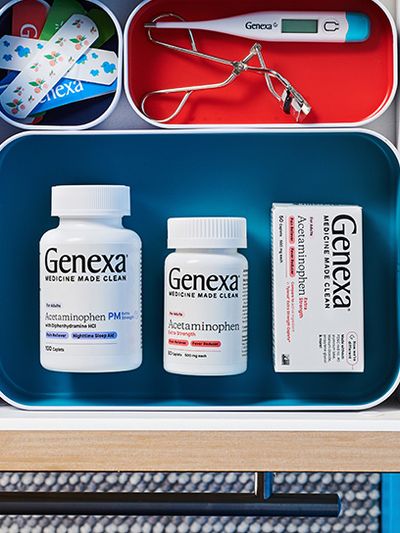Why Isn't There A Common Cold Vaccine?
Understanding Treatments For The Common Cold
Table of contents:
The common cold -- if you have kids, you know the symptoms all too well because it likely finds its way into your home much more frequently than you would like.
The common cold gets its name because of how often you can catch it, and if you have kids, this makes your family much more susceptible. This is because children spend plenty of time around lots of other children, so germs spread quickly and easily.
Colds tend to be pretty mild, and they usually resolve on their own, with no treatment, in 7-10 days. That said, the symptoms can be pretty annoying and uncomfortable, so you may be wondering why there is no common cold vaccine when there seem to be vaccines for other illnesses that are more serious.
Before getting into the details about why exactly there is no common cold vaccine, you may want to know the basics when it comes to the common cold.
The Common Cold: What Causes It?
Your or your loved ones can fall victim to the common cold any time of year, but it is most common in the winter and spring.
Symptoms include coughing, sneezing, congestion, a runny nose, headaches, and mild body aches, and these symptoms usually resolve within a week or so.
So, what causes the common cold, anyways?
There are actually many, many different types of viruses that can cause a cold, but rhinoviruses are the most common type. Aside from colds, rhinoviruses can also trigger asthma attacks, and they have been linked to sinus infections and ear infections, too. Besides rhinoviruses, colds can also be caused by respiratory syncytial virus, human parainfluenza viruses, adenovirus, common human coronaviruses, and human metapneumovirus.
How To Reduce Your Risk of Catching the Common Cold
Even though there is no vaccination against the common cold, there are still a few ways that you can protect yourself and your loved ones and help prevent yourself from falling ill.
You can reduce your risk of getting a cold by:
- Washing your hands frequently with soap and water: Washing your hands frequently for 20 seconds throughout the day is a great way to get germs off your hands. Washing your hands after touching high-contact surfaces, like doorknobs and light switches, can help keep you healthy.
- Refraining from touching your mouth, nose, and eyes when your hands are dirty: If your hands are unwashed, you should avoid touching your mouth, nose, and eyes. These three areas are the parts of your body that germs can enter through, and if you touch them when you are hands are all covered in germs… well, you get the point.
- Staying away from people who are sick: Close contact with sick people is one of the top ways that germs spread, so if you know that someone is sick you should keep your distance.
Why Isn’t There a Cure Yet?
When you think about how many vaccinations have been created, it is crazy to think that there is still no vaccination for the common cold… but it may not sound quite so crazy once you understand why.
The common cold can be caused by many different viruses, with the most common type being rhinoviruses… but there are over 100 subtypes of rhinoviruses. When you take this into consideration, it makes much more sense that no vaccination exists quite yet. With over 100 different types of viruses to tackle, it is extremely difficult to create a drug or vaccination that is effective against all of them.
Think about it this way: the reason why you can catch a cold but then catch another one just a couple weeks later is because of the fact that so many cold-causing viruses exist. Typically, when you catch an illness, your body then has antibodies that prevent you from catching the same illness again. With the common cold, however, this is not quite the case just because of the sheer number of different viruses that cause a cold. Even if you have antibodies against one of the viruses, there are still about 100 other viruses that can still get you sick.
Even more, viruses evolve very rapidly which makes things even more difficult. With over 100 viruses, all of which are constantly evolving, finding an effective cure for the common cold seems like an impossible feat, and this is why no vaccination exists.
Hope for the Future: A Possible Cure?
All of that being said, there may be hope for a future cure for the common cold. One study was able to identify a compound that actually stops the common cold in its tracks -- regardless of which virus has caused it.
The compound targets a human enzyme called N-myristoyltransferase, and all rhinoviruses need this compound in order to survive. Generally, this compound comes into play because viruses take over the enzyme in order to help them make new copies of themselves. Thus, inhibiting the enzyme would cut off the cold-causing virus’s ability to replicate itself, and this in turn would reduce the infectivity of the virus.
Because this compound targets a human enzyme instead of a virus itself, it becomes much easier to develop a broad-spectrum drug that would be hard for a virus to develop resistance to and one that is effective against all or even most rhinovirus subtypes.
Even better, the enzyme in question appears to be nonessential for humans, at least short-term, which means that disabling this enzyme temporarily, such as for a week or so, may not even cause any noticeable side effects but will still be effective at getting rid of rhinoviruses.
Amazingly, this approach of targeting and disabling a human enzyme not only worked to stop the common cold, but also asthma, encephalitis, myocarditis, and polio… so it is safe to say that this breakthrough is a big one.
Treating Cold Symptoms in the Meantime
Even though this breakthrough is very promising, it will likely still be a while before the cure is available for use by the public.
Many home remedies like drinking plenty of fluids, trying warm beverages, and using a humidifier can prove to be very helpful in reducing the discomfort caused by a cold, but oftentimes, some form of cold medicine may be needed. Keep in mind that anytime a cold does not respond to treatment, or if the symptoms worsen after 7 days, it is important to consult your doctor for advice regarding next steps.
The Bottom Line
When it comes to the common cold, everyone knows how pesky and uncomfortable the symptoms can be… yet there is no vaccine.
The fact of the matter is that the common cold has over 100 types of viruses that can cause it, and because of this, it is extremely difficult to develop a drug or vaccine that will be effective against every virus.
Plus, viruses can evolve very rapidly, making matters even more difficult.
Being that there are so many cold-causing viruses, this may help you understand why having one cold does not prevent you from catching another one in the future. Even if your body builds up immunity to one cold-causing virus, there are still 100 other ones that have the potential to infect you.
That said, there is hope for a common cold cure in the future thanks to a study that found that disabling a human enzyme can be effective for stopping the common cold in its tracks, because this enzyme is essential for rhinoviruses to replicate themselves.






